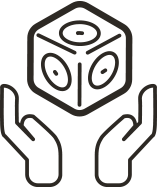 Continue reading
Continue reading
We all miss a couple days of school, whether it’s for professional development, sick days, or personal time, and that means we need to be prepared for a substitute to take over for a day. It’s a tough balance between keeping it light, yet academic. We can’t leave lessons that are too complex, otherwise we’ll need to reteach them when we return to the classroom anyway.
Some years, our students can comfortably run the class themselves, continuing their unit of study following the structures we’ve practiced so well together, but other years, our substitutes need to do a lot of heavy lifting!
That’s where the Cubelets lesson plans come in. If you’re saving Cubelets for a rainy day (or a sick day), keep a copy of the Meet Your Cubelets lesson plans in your sub binder. If you really love your sub, print out these #CubeletsChat blog posts about student protocols and tactile coding too, to give them all the tools they need to succeed.
 Continue reading
Continue reading
 Continue reading
Continue reading 


